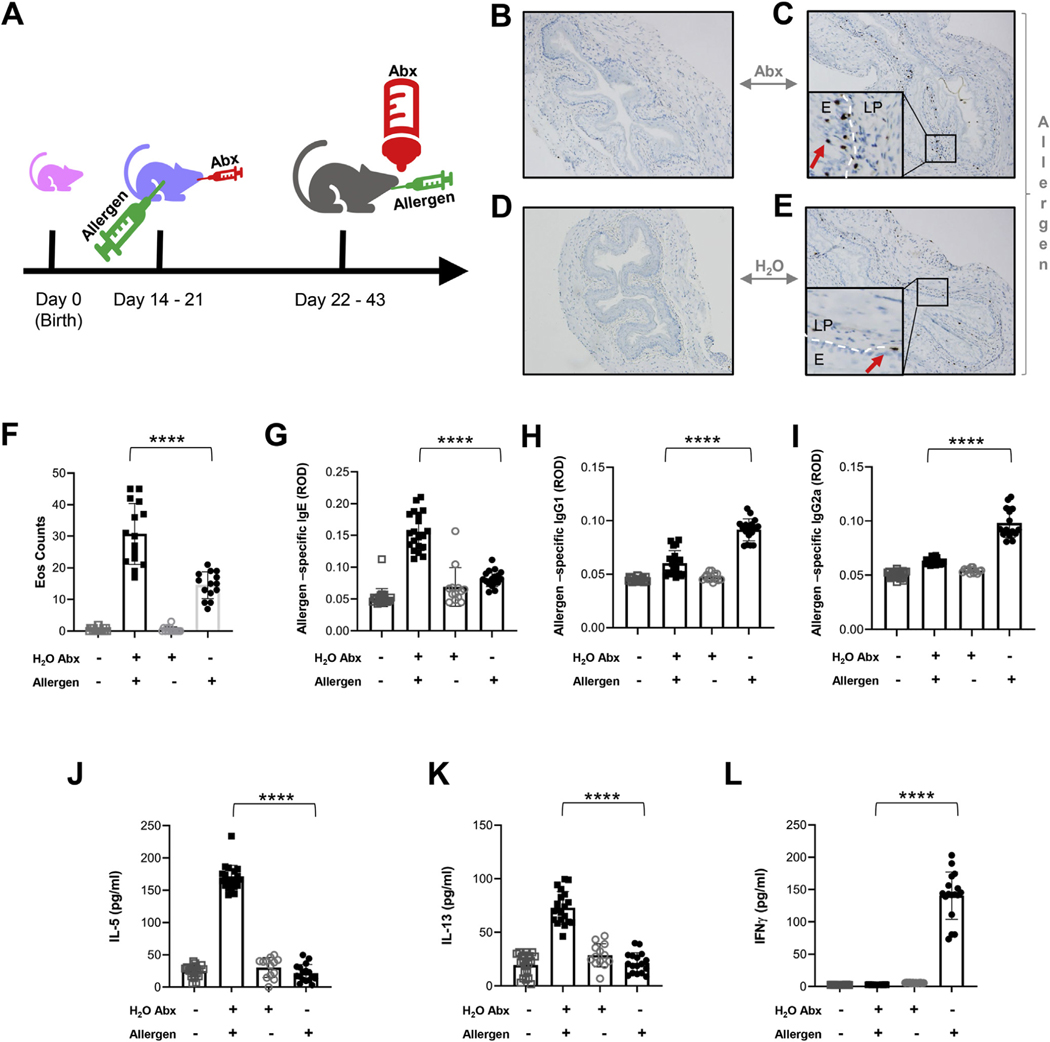Figure 6.
Effect of neonatal use of antibiotics on type 2 inflammation in murine model of EoE. (A) Experimental procedure schematic. (B–E) Representative eosinophil levels as determined by anti–major basic protein (MBP) staining of esophageal tissue (×10 magnification; MBP-positive eosinophils are indicated with arrows) from control (regular drinking water) naïve mice (B), mice whose drinking water was supplemented with antibiotics (H2O Abx) and who were allergen challenged (Allergen; A fumigatus) (C), mice whose drinking water was supplemented with antibiotics (H2O Abx) but who were naïve (D), or mice who were provided regular drinking water but were allergen challenged (E). (F) Eosinophil counts from anti-MBP staining of esophageal tissue from mice treated as indicated. (G–I) Allergen–specific antibodies in serum of mice from above groups by enzyme-linked immunosorbent assay. (J) IL-5, (K) IL-13, and (L) Interferon-gamma in the mouse sera from the aforementioned groups. Each dot represents the mean from a technical duplicate of samples from each individual mouse: H2O control, n = 22; Allergen Abx, n = 17; H2O Abx alone, n = 13; Allergen alone, n = 14. Data are represented as mean ± SD and are pooled from 3 independent experiments. Statistics by 1-way analysis of variance. ****P ≤ .0001. Abx, antibiotics; E, epithelium; LP, lamina propria; ROD, relative optical density.

